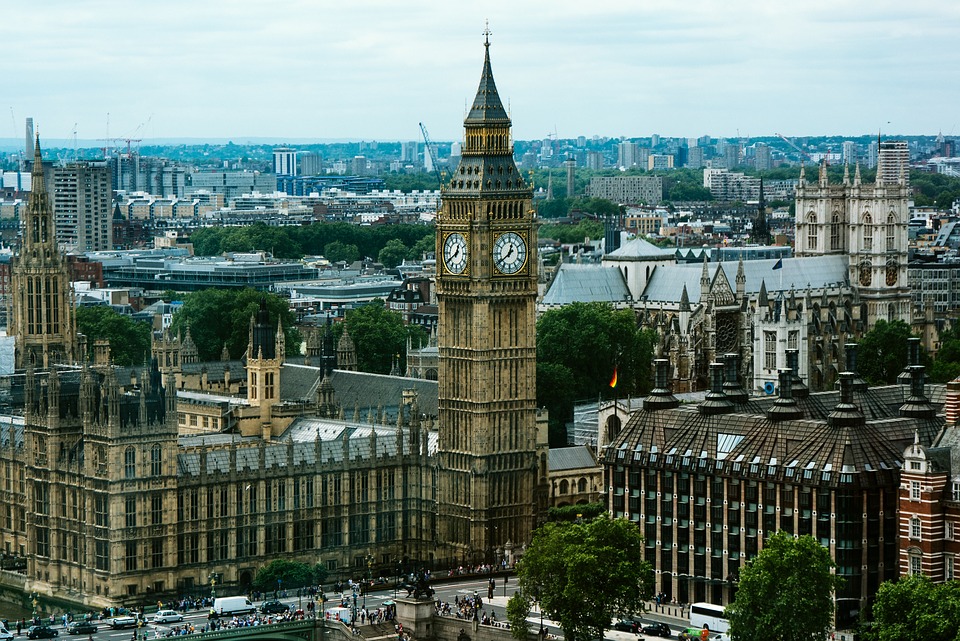Sterling surged on Friday as investors rushed to reprice the prospect of a last-minute Brexit deal, after the European Union gave its chief negotiator the go-ahead to re-open negotiations with London.
The pound has rallied more than 3% since Thursday, its biggest two-day gain since mid-June 2016, before the British public voted to leave the EU. On Friday, it surged by more than 2% to a three-and-a-half-month high.
Many investors were positioned for another Brexit delay as the most likely outcome, believing that the chances of an agreement before the end of October were virtually zero. The surprising news that talks were back on squeezed those betting against the pound, exaggerating the move higher, traders said.
EU Brexit negotiator Michel Barnier said on Friday that he’d had a “constructive” meeting with his British counterpart, Stephen Barclay, and the 27 countries in the EU gave him the go-ahead to try and agree withdrawal arrangements before the Oct. 31 deadline.
Barnier told member states that Britain has changed its position and now accepts that there cannot be the customs border on the island of Ireland, two EU sources said.
That followed a meeting on Thursday between the Irish and British prime ministers, who released a joint statement saying they could see “a pathway to a possible deal”.
The pound jumped 2% to $1.2708, its highest since late June at GBP=D3, in late London trading. It gained as much as 1.6% to 87.03 pence against the euro EURGBP=D3.
British stocks also rallied, gilt yields rose and money markets no longer fully priced in a 25-basis-point cut in interest rates by the Bank of England before December 2020.
Derivatives traders also regained confidence in the pound, with bullish bets exceeding bearish views on Friday for the first time since January 2018, according to the currency derivatives market, suggesting further gains for sterling.
Traders scrambled to cover positions amid the newfound optimism that a Brexit deal would be reached, said Kenneth Broux, FX strategist at Societe Generale.
“I think it’s very important to specify that sterling liquidity is very thin so volatility is high,” Broux said.
But he added that given the broadly bearish positions in sterling markets, “the obvious conclusion is that we’ll see a squeeze higher”.
Frederik Ducrozet, a strategist at Pictet Wealth Management echoed these sentiments. Irish officials have raised expectations for a deal, he said, and “if you get a path to a deal, there could be a massive squeeze in rates going higher and a re-steepening of yield curve.
“If that’s the case, then what we’ve seen today could just be the beginning of a bigger move,” Ducrozet said. “But we have been here before, so expectations may be a bit more limited.”
`TIME IS PRACTICALLY UP’
Despite the flurry of activity, it remains uncertain on what terms the UK will leave, when, and even whether it will do so at all.
Sounding a more cautious tone, top EU official Donald Tusk said “time is practically up” for Britain to reach a Brexit deal. That hurt the pound temporarily.
One dealer in London attributed price swings to “algos” – or computer-generated trading algorithms – in a headline-driven market.
Hopes are that a meeting between British and EU negotiators will pave the way for a Brexit transition deal at an Oct. 17-18 summit.. But some doubt Johnson will get the agreement past Britain’s parliament.
Deutsche Bank’s forex strategist George Saravelos said he was “turning more optimistic on Brexit” and no longer negative on the pound, while JPMorgan said the Anglo-Irish statement may have “changed everything”.
(For a graphic on ‘Sterling holds onto Thursday’s gains’ click tmsnrt.rs/2Mt66aq)
The sterling rally undermined UK’s export-heavy FTSE 100 .FTSE stocks index, but domestically focused UK retailers, banks and housebuilders benefited, rising 4% to 6%.
Irish stocks also rallied. Irish government bond yields fell .ISEQ IE10YT=RR.
Reporting by Elizabeth Howcroft
Source: UK Reuters










